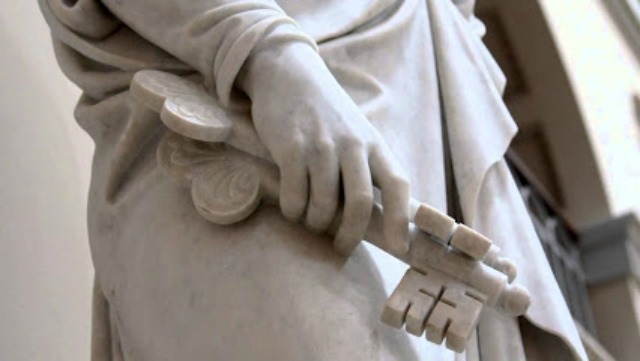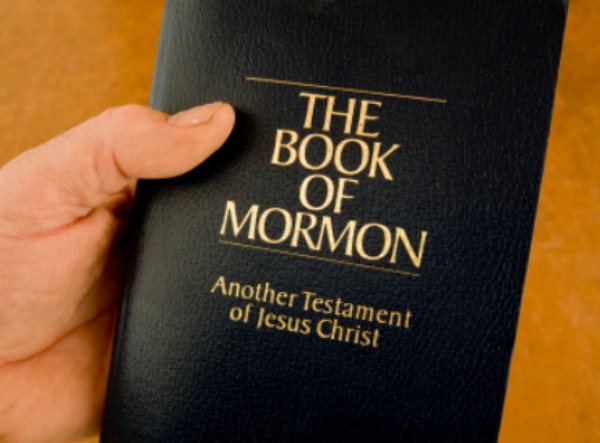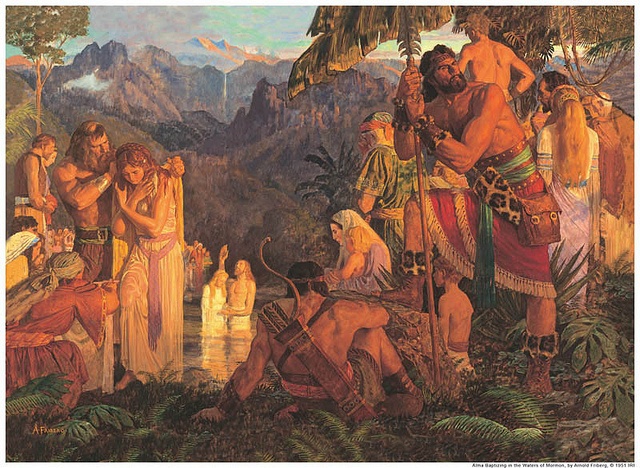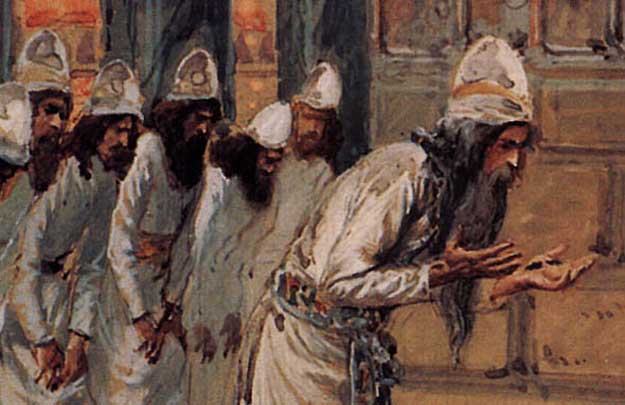Question
Gramps,
Why isn’t the word “keys” as related to the keys of the priesthood found in the Book of Mormon?
Bri
Answer
Dear Bri,
The term “keys”, as it relates to authority, priesthood, and revelation is a restoration term. That is, when we turn to ancient scriptures the word is in scant supply. As you note, the only keys found in the Book of Mormon have no relation to God’s authority delegated to man. The Old Testament only has 1 instance, found in Isaiah, referencing the “key of the house of David” (Isaiah 22:22). Turning to the Pearl of Great Price, we don’t find any mention of keys in Abraham (who receives a renewing of the promises of the fathers) or Moses (who clearly receives a restoration of the Abrahamic covenant, but not a word about keys). The New Testament starts pouring out keys. The gospels double our count and include the “keys of the kingdom of heaven” (Matthew 16:19) and the “key of knowledge” (Luke 11:52). When we come to the book of Revelation we again double our count. We learn that Christ holds the “keys of hell and death” (1:18) and the aforementioned “key of David” (3:7), and that He will send an angel with “the key of the bottomless pit” that releases war and plagues (9:1) and binds Satan for 1000 years (20:1).
In total, we have 7 references (we can bump the count up to 9 if we include the Joseph Smith-Translation of Luke 3:8 (“the keys of the kingdom”) and Joseph’s translation of John’s parchment in D&C 7 (“keys of this ministry”)) to keys in ancient scripture. Even when the keys of the kingdom are promised, their delivery is captured in the narrative as an evening of angelic instruction (compare Matthew 17:3-4 with D&C 110). There is a marked absence in the Bible as well as the Book of Mormon.
Then we turn to the Doctrine and Covenants and find the former count eclipsed in almost 60 mentions! We find a concentration of 13 in Sections 124 and 128 (dealing with baptism for the dead), 7 in Section 107 (dealing with the organization of priesthood quorums), 6 in section 132 (dealing with eternal marriage), 5 in Section 27 (dealing with the stewardship of those who hold keys), and 4 in Section 90 (dealing with the organization of the First Presidency). We also note that keys are mentioned at pivotal moments of the Restoration. John the Baptist (D&C 13), Moses, and Elijah (D&C 110) all use the term as they confer authority. Indeed, “Michael, the archangel, … Gabriel, … Raphael, and … divers angels, from Michael or Adam down to the present time, all declar[ed] their dispensation, their rights, their keys, their honors, their majesty and glory, and the power of their priesthood” (D&C 128:21).
We can excuse a dearth of the term “keys” in the Bible because of the loss of “plain and precious” truths. We wouldn’t expect the details of Elijah’s sealing power or Moses’ keys of gathering to make it past the cutting room floor when the texts are selected by a people who neither gather nor seal. But more generic keys, the keys of the kingdom, that is sanitized and safe and can make it through. And yet, this explanation is unsatisfactory for the Book of Mormon. The record wasn’t tampered with. So where are the keys?
Looking at those groupings in the Doctrine and Covenants, we find the common themes of new ordinances (124, 128, 132), organization (27, 90, 107), and restoration (13, 110, 128:21).Looking to the Book of Mormon, we don’t really see new ordinances introduced. Nephi knows about baptism from the moment Lehi dreams about the tree of life. We don’t really see the genesis of a restoration. We enter the scene and Lehi already has authority from God. If Lehi or Nephi are receiving keys “line upon line” (D&C 128:21), then we don’t get to hear about it because the small plates of Nephi are only for the spiritual highlights (Jacob 1:1-3). It’s not until we get back into the record of the large plates that we find the stirrings of a revival. Zeniff looks for a temporal restoration, which leads us to Alma and the period of spiritual awakening in the land of Lehi-Nephi. Even here though, we’re dealing with an abridgment so we don’t hear about keys, although we do hear prominently about “authority”. Alma baptized “having authority from the Almighty God” (Mosiah 18:13) then, “having authority from God, ordained priests” (Mosiah 18:18). We continue to find parallels (though no mention of “keys”) in this new organization Alma sets up, for this authority empowers him to set the priesthood in order (ibid). When his people finally gather to Zarahemla, he sets up a similar organization but this time under the direction of King Mosiah (Mosiah 26:8 and 25:19). In this land, Mosiah holds the keys and Alma honors them. We see the theme of new organization again (as well we should) when Christ comes to visit the Lehites. Although 3rd Nephi gives us the official account of the organization (including who may baptize (11:21)) the pecking order between the Old and New World (and thus the scope of the keys) is only clarified elsewhere (1 Nephi 12:9-10 and Mormon 3:19-20).
In short, the ancient scripture we have (including and especially the Book of Mormon) don’t focus heavily on “keys” because 1) they are heavily filtered (or abridged in the case of the Book of Mormon), 2) they are not intended as restoration documentation – detailing the origin of the order and organization used, and 3) no other dispensation has had the scope that ours has. Joseph Smith shares with us the vision:
“It is necessary in the ushering in of the dispensation of the fulness of times, which dispensation is now beginning to usher in, that a whole and complete and perfect union, and welding together of dispensations, and keys, and powers, and glories should take place, and be revealed from the days of Adam even to the present time. And not only this, but those things which never have been revealed from the foundation of the world, but have been kept hid from the wise and prudent, shall be revealed unto babes and sucklings in this, the dispensation of the fulness of times” (D&C 128:18).
The word “keys” appears to be a term that our dispensation has lifted from the New Testament dispensation. It may not be used in connection with the priesthood in the Book of Mormon, but it is clear that keys were extant and turned. We can sometimes find where there is “authority” and infer use of keys moving the work forward.
Gramps







